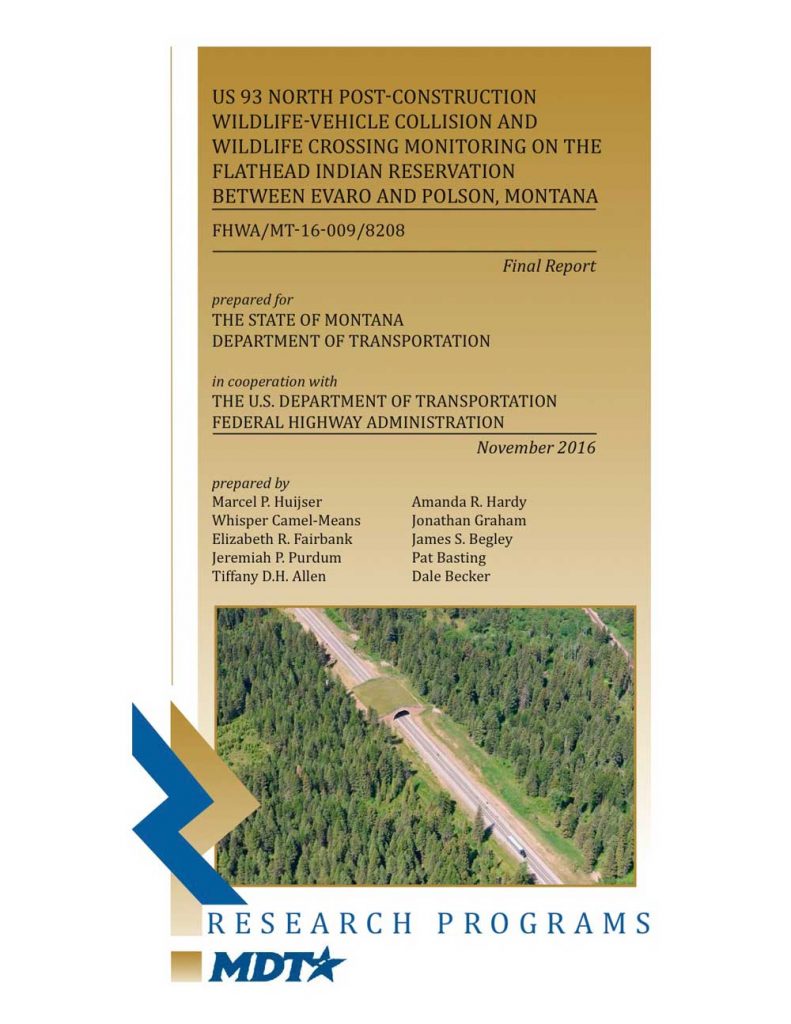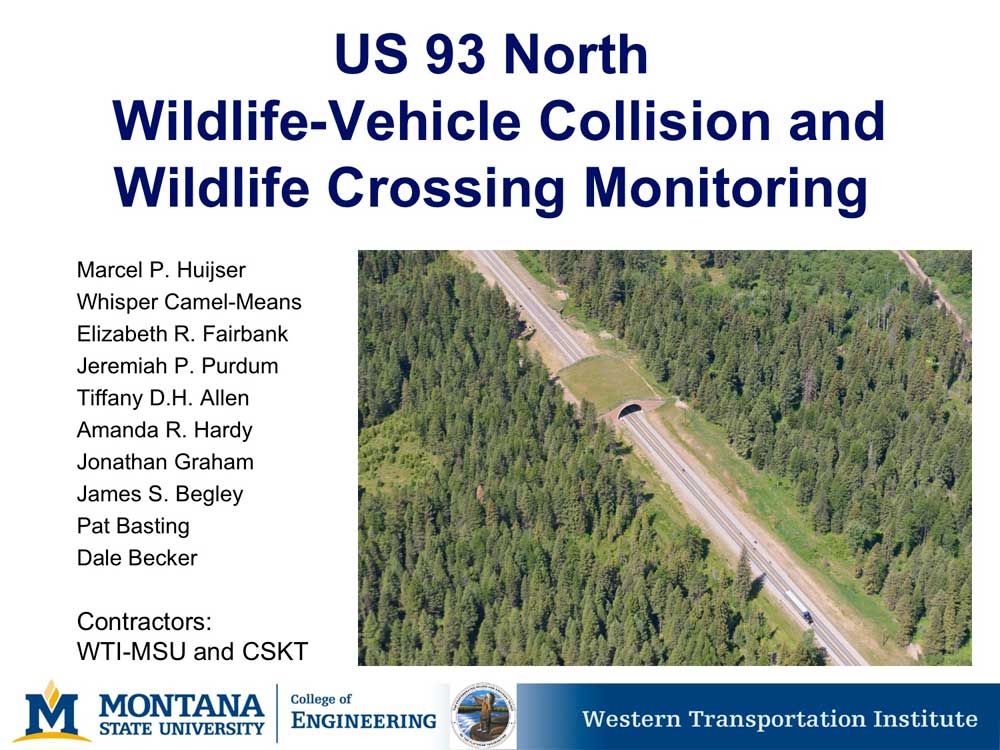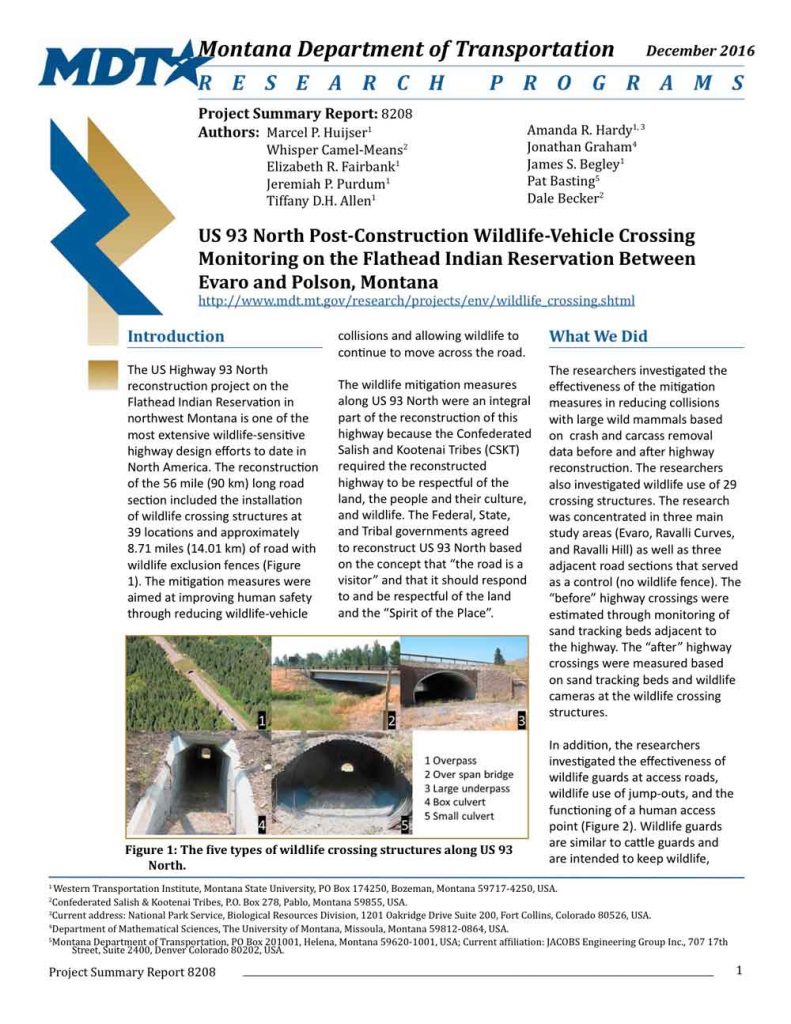
Research
Mixed-use landscapes such as agricultural areas, towns, and villages are where most wildlife-vehicle collisions occur. But to date, most of our knowledge about the effects of traffic on wildlife comes from research conducted in protected areas like national parks, national forests, and preserves—where human impacts are at a minimum. With the US 93 North reconstruction project, that changed. The mitigation measures put into place on US 93 North provide an unprecedented opportunity to evaluate the effectiveness of wildlife fences and wildlife crossing structures in an area used by both by wildlife and humans. The reports listed below summarize the effectiveness of the mitigation measures and distinguish between human safety, wildlife habitat connectivity, and cost-benefit analyses. The outcomes of the research were used to formulate recommendations for best management practices for wildlife-vehicle collision reduction and wildlife crossing mitigation projects throughout North America and beyond. Data collection and monitoring methods included:- Collection of the number of animal-vehicle collisions through Montana Highway Patrol crash reports, Montana Department of Transportation (MDT) carcass removal reports, and bear road mortality data from natural resource management agencies.
- Digital motion-sensitive wildlife cameras at the majority of crossing structures, wildlife guards (similar to cattle guards), ends of fences, and jump-outs
- Sand tracking beds at jump-outs and selected crossing structures
- Deer pellet group surveys to measure potential changes in the deer population size
Other Research on US93N
Research on 93Nwildlife crossing structures has been completed by several graduate students:
A.Z. Andis, M.P. Huijser and L. Broberg. Accepted. Performance of Arch-style Road Crossing Structures from Relative Movement Rates of Large Mammals. Frontiers in Ecology and Evolution. (Article link coming soon)



